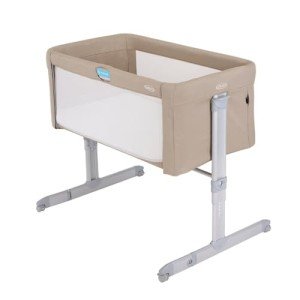The Versatility of Bedside Cots: A Comprehensive Guide
Bedside cots have acquired popularity among new parents for their multifunctional design and ease of use. These versatile sleeping services permit caretakers to keep their newborns close while guaranteeing security and convenience. In this short article, we will explore the functions, advantages, and numerous options available in the market for bedside cots, in addition to supply responses to regularly asked questions.
What is a Bedside Cot?
A bedside cot, often referred to as a co-sleeper or sidecar crib, is a small bed developed to be attached to the parent's bed. This design allows parents to have their baby within arm's reach while preserving a separate sleeping space. Lots of bedside cots are adjustable in height, making it simpler to align them with the height of the parents' bed.
Key Features of Bedside Cots:
- Attachable Design: Most bedside cots include a safe attachment system to the parent's bed, making sure security for the baby.
- Adjustable Height: Many models allow height changes to match the moms and dad's bed mattress.
- Breathable Mesh Walls: To boost exposure and airflow, the majority of styles include mesh sides.
- Compact Size: Bedside cots are usually smaller than standard cribs, making them ideal for smaller spaces or easy mobility.
- Security Features: Safety is critical, and many bedside cots feature functions such as locking mechanisms and sturdy frames.
Advantages of Bedside Cots
Bedside cots not only promote safe co-sleeping practices however likewise bring a myriad of benefits that enhance the parent-child bonding experience. Here are some of the most considerable advantages:
1. Close Proximity
Having the baby close allows moms to react rapidly to their infant's needs, thereby promoting attachment and guaranteeing a soothing environment for the kid.
2. Easier Nighttime Feeding
Breastfeeding mothers discover bedside cots tremendously helpful as they eliminate the need to rise for nighttime feedings. Full Content can lead to a more restful night's sleep for both the moms and dad and the infant.
3. Safety and Comfort
Bedside cots supply the security of a separate sleeping space while still developing the intimacy of co-sleeping. This arrangement is often suggested by pediatricians to minimize the threat of SIDS (Sudden Infant Death Syndrome).
4. Space-Saving
For households residing in smaller homes or apartment or condos, bedside cots are a space-efficient solution compared to conventional cribs.
5. Flexibility for Growing Babies
Many bedside cots can shift into a standalone crib or even a playpen as the baby grows, ensuring long-lasting functionality.
Types of Bedside Cots
Before buying a bedside cot, it is very important to understand the different types offered. Below are the most common varieties:
- Standard Bedside Cots: These attach straight to the parents' bed and can be easily moved.
- Travel Bedside Cots: Portable designs are lightweight and foldable, making them best for travel or trip.
- Convertible Cots: These can be changed into a full-size crib or play location, offering prolonged use.
- Swivel Cots: Some models feature a rotating design, allowing parents to quickly reach the baby without having to raise them.
Purchasing Considerations for Bedside Cots
When looking for a bedside cot, it is crucial to take particular elements into account:
- Safety Certifications: Always look for security standards from reputable organizations such as the Consumer Product Safety Commission (CPSC).
- Alleviate of Assembly: Look for models that are easy to set up and secure to the bed.
- Product Quality: The materials utilized in the cot must be non-toxic and strong adequate to endure everyday use.
- Price Range: Depending on features and design, rates can vary significantly. Review your spending plan and select a cot that meets your requirements.
- User Reviews: Consider reading client reviews to evaluate the cot's sturdiness and performance.
A Comparison Table of Popular Bedside Cots
| Brand | Type | Cost Range | Weight Capacity | Special Features |
|---|---|---|---|---|
| Chicco Next2Me | Standard | ₤ 200-₤ 300 | 9-36 pounds | Adjustable height, collapsible sides |
| Baby Delight | Convertible | ₤ 150-₤ 250 | 5-30 pounds | Can convert to a play lawn |
| Joovy Room2 | Travel | ₤ 100-₤ 150 | 5-50 lbs | Portable, easy fold design |
| Snuggle Me | Swivel | ₤ 250-₤ 350 | 5-30 pounds | 360-degree swivel function |
Frequently Asked Questions
1. Are bedside cots safe for newborns?
Yes, bedside cots are equipped with security features that make them a safe sleeping choice when utilized properly. Constantly make sure that the attachment to the primary bed is safe.
2. Can I use a bedside cot for co-sleeping with twins?
While many bedside cots are developed for single infants, some designs are wider and can accommodate twins. Nevertheless, talk to your pediatrician for assistance.
3. How long can a baby sleep in a bedside cot?
Normally, babies can use a bedside cot up until they reach around 30-35 pounds or can climb out, which is usually around 5-6 months, however it may vary based upon the design.
4. How do you clean up a bedside cot?
The majority of bedside cots include removable and washable mattresses or covers. It's advisable to refer to the manufacturer's care guidelines for more specific cleansing standards.
5. Can I travel with a bedside cot?
Yes, lots of bedside cots are created to be portable and can fold for travel. Try to find travel-friendly models if you expect moving regularly.
Bedside cots offer a convenient and safe alternative for parents who wish to keep their newborns nearby, integrating the benefits of co-sleeping with the security of a separate sleeping space. With various designs, features, and choices available, it is necessary for parents to thoroughly consider their requirements and choices before buying. Buying a top quality bedside cot can assist in a smoother nighttime regimen and promote a more detailed bond between moms and dad and child.

